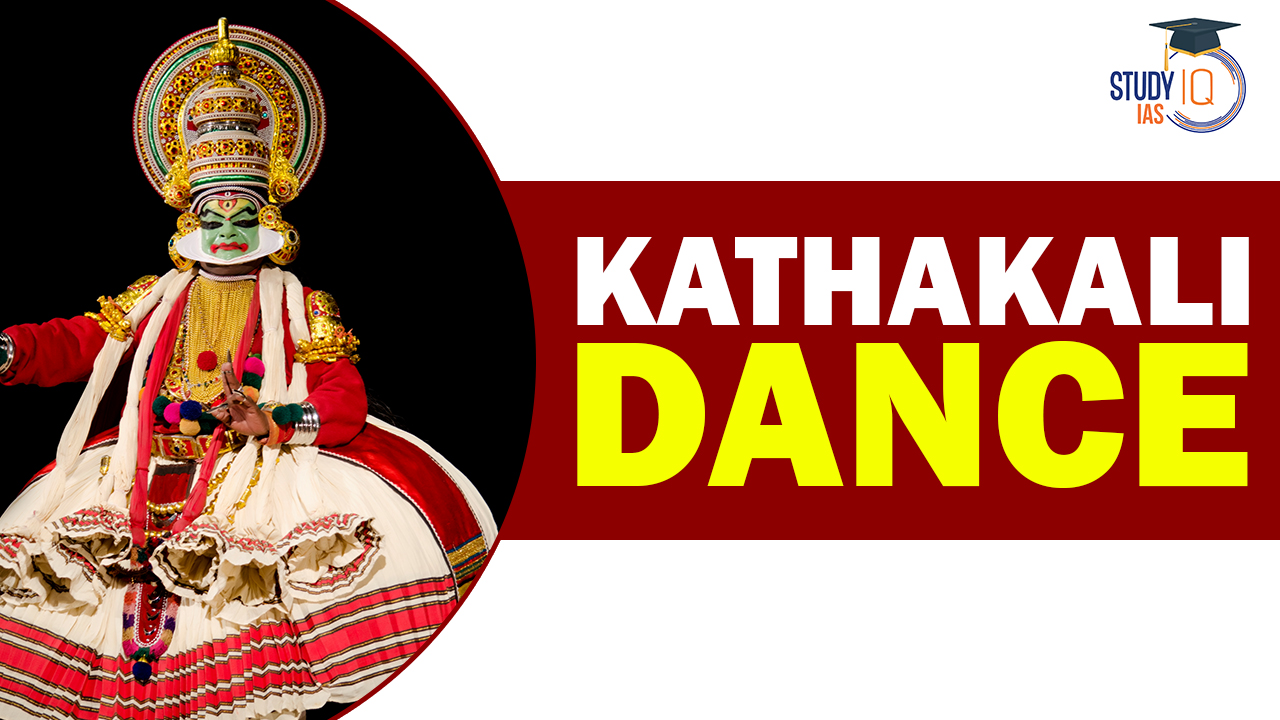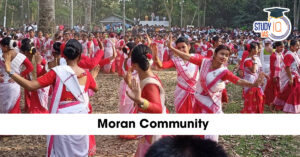Table of Contents
Kathakali is a major form of classical Indian dance that originated in the southern state of Kerala. It is a blend of dance, music, and acting that dramatizes stories, mostly adapted from Indian epics. The dance is characterized by the elaborately colorful makeup and costumes of the traditional male actor-dancers.
Kathakali is a “story game” genre of art. It is a religious dance that draws inspiration from the Ramayana and stories from Shaiva traditions. Kathakali is traditionally performed by boys and men, even for female roles.
We’re now on WhatsApp. Click to Join
Kathakali Dance: Indian Classical Dance
‘Kathakali,’ a significant genre within the Indian classical dance tradition, is renowned for its storytelling aspect. Originating in the southern Indian state of Kerala, this dance drama shares commonalities with other Indian classical dance forms in its use of footwork, expressive facial and hand gestures, and musical accompaniment to convey narratives to the audience. What sets ‘Kathakali’ apart is its elaborate and vibrant makeup, distinctive face masks, and costumes worn by the performers. The dance style and movements are characterized by influences from ancient martial arts and athletic traditions prevalent in Kerala and its surrounding regions.
Traditionally, ‘Kathakali’ has been predominantly performed by male dancers, and it emerged in the courts and theaters of Hindu regions. This sets it apart from other Indian classical dances that primarily evolved within Hindu temples and monastic schools. Although its precise origins are not clearly traceable, this classical dance form is believed to have roots in temple and folk arts dating back to the 1st millennium CE or even earlier.
Kathakali Dance Origin and Evolution
- ‘Kathakali’ has its roots in ancient Sanskrit Hindu text ‘Natya Shastra,’ attributed to the sage Bharata Muni.
- The text, completed between 200 BCE to 200 CE (or possibly 500 BCE to 500 CE), categorizes dance into ‘nrita’ (pure dance) and ‘nritya’ (solo expressive dance).
- Natalia Lidova notes that ‘Natya Shastra’ explores various theories of Indian classical dances, including Tandava dance, standing postures, basic steps, bhava, rasa, acting methods, and gestures.
- The name ‘Kathakali’ is derived from ‘Katha’ (a traditional tale or story) and ‘Kali’ (derived from ‘Kala,’ meaning art and performance).
Ambiguous Historical Roots
- Views on the historical roots of ‘Kathakali’ vary
- Jones and Ryan suggest a history of over 500 years.
- Mahinder Singh proposes roots dating back around 1500 years.
- Phillip Zarrilli points to the 16th and 17th centuries as the period of Kathakali’s unique development in the coastal belt of southern India, where Malayalam is spoken.
- Evolution from ‘Krishnanattam’ and ‘Ramanattam’
- ‘Krishnanattam,’ depicting Lord Krishna’s life, is considered a precursor to ‘Kathakali.’
- ‘Krishnanattam’ developed under the Zamorin ruler of Calicut, Sri Manavedan Raja.
- The creation of ‘Ramanattam’ by Kottarakkara Thampuran, in response to a denied request, is seen as the genesis of ‘Kathakali.’
- ‘Ramanattam’ differs as it is written in Malayalam, while ‘Krishnanattam’ is in Sanskrit.
- Influence of ‘Kutiyattam’ and Folk Arts
- ‘Kathakali’ shares elements with ‘Kutiyattam,’ a Sanskrit drama form in Kerala.
- Evolution from folk arts, including ‘Porattunatakam’ and ritualistic forms like ‘Padayani,’ ‘Teyyam,’ and ‘Mudiyettu.’
- Reflects aspects of ‘Kalaripayattu,’ an ancient martial art from Kerala.
- Performance Style and Themes
- Uniqueness lies in the exclusive focus of actor-dancers on emoting scenes through acting and dancing, while voice artists deliver lines.
- Traditionally, themes were based on religious sagas, legends, mythologies, folklores, and spiritual concepts.
- Modern ‘Kathakali’ troupes adapt themes from Christianity, Western plays, and works of authors like William Shakespeare.
- Contemporary evolution includes the inclusion of women in troupes, breaking the traditional all-men ensemble.
- Language and Adaptation
- Traditional vocal parts continue to be delivered in Sanskritized Malayalam.
- Contemporary adaptations include themes from various cultural and religious sources, showcasing the dynamic evolution of ‘Kathakali.’
Kathakali Dance Repertoire
Attakatha Structure
- ‘Kathakali’ is structured around ‘Attakatha,’ meaning the story of dance.
- ‘Attakatha’ plays historically derived from Hindu epics like ‘Bhagavata Purans,’ ‘Mahabharata,’ and ‘Ramayana.’
- The format allows for dialogue portions (Pada) and action portions (Shloka) determination, with the latter elucidating actions through choreography.
Performance Format
- A Kathakali performance involves actor-dancers, vocalists, and musicians.
- Typically begins at dusk and continues through dawn with breaks and interludes, sometimes spanning several nights.
Kathakali Dance Costumes
Intricate Makeup and Costume
- ‘Kathakali’ incorporates intricate makeup, costumes, face masks, headgear, and brightly painted faces.
- Unique costume, accessories, and makeup complemented by spectacular performances, music, and lighting.
- Makeup code categorizes characters into gods, goddesses, saints, animals, demons, etc., reflecting the ‘Guna’ theory of personalities.
Makeup Codes
- Seven fundamental makeup codes include ‘Pacca’ (green), ‘Minukku,’ ‘Teppu,’ ‘Kari’ (black), ‘Tati,’ ‘Payuppu’ (ripe), and ‘Katti’ (knife).
- Each code corresponds to specific character types, utilizing colors extracted from vegetables and rice paste.
Kathakali Dance Instruments and Music
Musical Instruments
- ‘Kathakali’ performances feature three major drums: ‘Itaykka,’ ‘Centa,’ and ‘Maddalam.’
- Music plays a significant role, creating variations in tones corresponding to the mood of a scene.
Musical Arrangements
- Various musical arrangements, such as ‘Cempata’ for combat scenes, ‘Atanta’ for divine characters, ‘Muri Atanta’ for heroic acts, ‘Triputa’ for scenes with teachers and sages, ‘Pancari’ for repugnant scenes, and ‘Campa’ for clashes and arguments.
Vocal Contribution
- Voice artists play a significant role, delivering lines and setting the mood.
- Modulation of voice expresses the temperament of the character, with clear and sharp tones for anger and delicate tones for pleas.
Kathakali Dance Famous Exponents
- Kavungal Chathunni Panicker, a veteran from the renowned Kavungal family with six generations in ‘Kathakali.’
- Kalamandalam Gopi, a prominent representative of the Kalluvazhi School with over 30 years in the field.
- Kottakkal Sivaraman, is known for portraying feminine characters and expressing various ‘nayika bhavas.’
- Kalamandalam Ramankutty Nair, is recognized for negative characters like Ravana and Duryodhana, as well as Lord Hanuman.
- Other eminent performers include Kalamandalam Krishna Prasad, Kalamandalam Vasu Pisharody, Kalamandalam Kesavan Namboodiri, and Kalanilayam Balakrishnan.
Kathakali Dance UPSC
Kathakali, a classical Indian dance form originating in Kerala, combines dance, music, and acting, depicting stories from epics like the Ramayana. Characterized by elaborate makeup and costumes, it draws from the ancient Sanskrit text ‘Natya Shastra.’ Historical roots are debated, ranging from 500 years to the 16th-17th centuries. Influenced by ‘Krishnanattam’ and ‘Ramanattam,’ it evolved from Hindu traditions.
Unique in its exclusive focus on emoting through dance, Kathakali’s themes range from traditional sagas to modern adaptations. Makeup codes, intricate costumes, and vibrant performances enhance its visual appeal. The art involves three major drums and musical arrangements complementing scenes. Renowned exponents include Kavungal Chathunni Panicker, Kalamandalam Gopi, and Kottakkal Sivaraman.
| Other Classical Dances of India | |
| Bharatanatyam Dance | Kathak Dance |
| Kuchipudi Dance | Manipuri Dance |
| Kathakali Dance | Mohiniyattam Dance |
| Sattriya Dance | Odissi Dance |


 Poompuhar Port: Ancient Sangam-Era Marit...
Poompuhar Port: Ancient Sangam-Era Marit...
 UNESCO World Heritage Sites of India Lis...
UNESCO World Heritage Sites of India Lis...
 Moran Community of Assam, History, Langu...
Moran Community of Assam, History, Langu...

























